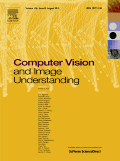
COMPUTER VISION AND IMAGE UNDERSTANDING
Scope & Guideline
Illuminating Innovations in Computer Vision
Introduction
Aims and Scopes
- Image Segmentation and Object Detection:
The journal emphasizes research on image segmentation and object detection, highlighting novel algorithms and techniques to improve the accuracy and efficiency of identifying objects within images. - Deep Learning Applications:
A significant focus is placed on the application of deep learning techniques across various domains, including image classification, video analysis, and real-time object tracking. - Multimodal Learning:
Research involving multimodal learning, where information from different sources (e.g., visual and auditory) is integrated to enhance understanding and interpretation of data, is a core area of interest. - Adversarial Learning and Robustness:
The journal covers advancements in adversarial learning, focusing on creating models that are robust against adversarial attacks, which is crucial for applications in security and safety. - Medical Imaging and Health Applications:
There is a dedicated section for research in medical imaging, addressing challenges and innovations in diagnosing and analyzing medical images using computer vision techniques. - 3D Vision and Scene Understanding:
Research on 3D vision, including depth estimation, 3D reconstruction, and understanding complex scenes, is a prominent theme, reflecting the journal's commitment to advancing spatial understanding in images. - Ethics and Social Implications of AI:
The journal also addresses the ethical implications of computer vision technologies, focusing on responsible AI practices and the societal impact of image understanding technologies.
Trending and Emerging
- Explainable AI in Vision Systems:
There is an increasing emphasis on explainable AI, aiming to make computer vision systems more interpretable and transparent, which is crucial for user trust and regulatory compliance. - Integration of AI with IoT and Edge Computing:
Research that explores the integration of computer vision with Internet of Things (IoT) devices and edge computing is gaining traction, as it enables real-time processing and analysis in resource-constrained environments. - Generative Models and Data Augmentation:
Generative models, particularly Generative Adversarial Networks (GANs), are trending, with a focus on their application in data augmentation and synthetic data generation to enhance model training. - Temporal and Spatio-Temporal Analysis:
There is a growing interest in models that analyze temporal data, particularly in video understanding and action recognition, reflecting the need for systems that can interpret sequences of images. - Robustness Against Adversarial Attacks:
Research into developing robust computer vision models that can withstand adversarial attacks is becoming increasingly important, addressing security concerns in deployment. - Cross-Modal Learning:
Cross-modal learning is an emerging theme, focusing on leveraging information from different modalities (e.g., text, audio, and images) to improve understanding and performance in various tasks.
Declining or Waning
- Traditional Image Processing Techniques:
There has been a noticeable decrease in publications focusing on traditional image processing methods, such as classical filtering and morphological operations, as the field increasingly shifts towards machine learning and deep learning solutions. - Handcrafted Features and Algorithms:
The focus on handcrafted feature extraction methods has diminished, with a growing preference for end-to-end deep learning approaches that automatically learn features from data. - Static Image Analysis:
Research centered solely on static image analysis has seen a decline, as there is a growing emphasis on dynamic and temporal analysis, particularly in video processing and real-time applications. - Low-Level Vision Tasks:
Topics related to low-level vision tasks, such as basic image enhancement and denoising, are less frequently addressed, overshadowed by more complex and application-driven research.
Similar Journals

Signal Image and Video Processing
Pioneering Research in Image and Video ProcessingSignal Image and Video Processing, published by Springer London Ltd, is a cutting-edge academic journal dedicated to the fields of electrical and electronic engineering and signal processing. With an ISSN of 1863-1703 and an E-ISSN of 1863-1711, this journal plays a pivotal role in disseminating innovative research findings from 2007 to 2024, boasting a commendable Q2 ranking in its respective categories. Located in the United Kingdom, the journal attracts a diverse readership of researchers, professionals, and students eager to explore advancements in signal processing technologies and their applications in imaging and video analysis. Although it does not offer open access, its rigorous peer-review process ensures the publication of high-quality, impactful research, evident by its respectable rankings within Scopus in both electrical engineering and computer science domains. The journal serves as vital resource for those aiming to stay at the forefront of technological developments and research in image and video processing.
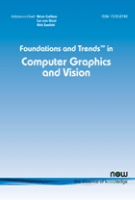
Foundations and Trends in Computer Graphics and Vision
Unveiling the Foundations of Visual InnovationFoundations and Trends in Computer Graphics and Vision, published by NOW PUBLISHERS INC, is a premier journal dedicated to advancing the fields of computer graphics and vision. With an impressive impact factor and ranked Q1 in the Computer Vision and Pattern Recognition category, this journal has established itself as a vital resource for cutting-edge research and trends. Spanning from 2005 to 2024, it covers a wide array of topics within its scope, featuring comprehensive reviews and insights that are essential for professionals, researchers, and students alike. The journal’s high Scopus rank, placing it in the top 4 of 106 in its discipline, underscores its relevance and authority in the field. While currently not offering open access, the importance of its curated content makes it a valuable addition to any academic library and a must-read for those looking to stay at the forefront of computer graphics and vision advancements.

EURASIP Journal on Image and Video Processing
Empowering Knowledge in Image and Video SciencesEURASIP Journal on Image and Video Processing, published by Springer, is a leading open-access journal dedicated to the dissemination of significant advancements in the field of image and video processing. Since its inception in 2007, the journal has been pivotal in bridging the gap between theoretical research and practical applications, serving a diverse audience of researchers, professionals, and students. With an impressive impact factor reflected in its 2023 Scopus rankings—ranking Q2 in Electrical and Electronic Engineering, Information Systems, and Signal Processing—this journal showcases innovative methodologies, applications, and technologies in the realm of image and video processing. Authors benefit from the journal's open-access model, promoting widespread visibility and accessibility of their work. Located in the heart of New York City, the journal continues to evolve, covering converged years from 2007 to 2024, ensuring it remains at the forefront of research in a rapidly changing technological landscape.
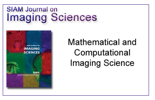
SIAM Journal on Imaging Sciences
Navigating the Intersection of Mathematics and Imaging.SIAM Journal on Imaging Sciences is a prestigious academic journal published by SIAM PUBLICATIONS, focusing on the latest advancements and applications in imaging sciences within the fields of applied and general mathematics. Since its inception in 2008, the journal has established itself as a premier outlet for original research, evidenced by its remarkable standing in the academic community, including a Q1 ranking in both Applied Mathematics and Mathematics (miscellaneous) for 2023. With a Scopus rank of #45 in General Mathematics and an 88th percentile achievement, the journal continues to attract high-quality contributions, making it a vital resource for researchers, professionals, and students eager to stay at the forefront of imaging science developments. Although not currently open access, the journal provides significant visibility through its rigorous peer-review process and commitment to scholarly excellence, ensuring that published works contribute substantially to knowledge in the field. For those looking to delve into innovative imaging techniques or mathematical modeling approaches, the SIAM Journal on Imaging Sciences remains an essential reference point.

Journal of Imaging
Transforming Ideas into Visual RealitiesThe Journal of Imaging, published by MDPI, is an esteemed open-access journal dedicated to advancing the fields of Computer Graphics, Computer Vision, and Electrical Engineering. Since its inception in 2015, this journal has established a significant presence in the academic community, reflected by its impressive rankings in Scopus, including a Q2 quartile in multiple categories such as Computer Vision and Pattern Recognition and Radiology. With a commitment to disseminating high-quality research, the journal offers a platform for innovative studies and practical applications, making it an essential resource for researchers, professionals, and students alike. Operating from its base in Basel, Switzerland, the journal continues to promote scholarly work that pushes the boundaries of imaging technologies, while contributing to the global discourse in its respective fields. The open-access model ensures that valuable research is readily available, fostering collaboration and knowledge-sharing across disciplines.
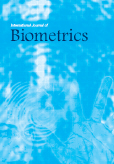
International Journal of Biometrics
Connecting Academia and Industry in Biometric SolutionsInternational Journal of Biometrics is a distinguished platform dedicated to advancing research in the multifaceted areas of biometrics and its applications across various disciplines. Published by InderScience Enterprises Ltd in the United Kingdom, this journal serves as a vital resource for researchers, professionals, and students involved in applied mathematics, computer science, and electrical engineering. With an ISSN of 1755-8301 and an E-ISSN of 1755-831X, the journal provides a curated collection of innovative studies and reviews that contribute to understanding and improving biometric technologies. As of 2023, it holds a Q4 ranking across several relevant categories, reflecting its commitment to fostering knowledge in an emerging field. Though currently non-open access, it remains accessible to academic institutions and professionals, aiming to bridge gaps in biometrics research and practice. The journal covers a wide scope of topics, notifying readers about essential developments in image processing, pattern recognition, and electronic engineering applications, making it an indispensable resource for anyone interested in the dynamic field of biometrics.
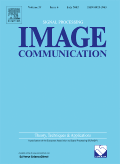
SIGNAL PROCESSING-IMAGE COMMUNICATION
Transforming Ideas into Visual SolutionsSIGNAL PROCESSING-IMAGE COMMUNICATION, published by Elsevier, is a leading journal in the fields of Computer Vision, Signal Processing, and Electrical Engineering. With an impressive range of Quartile rankings in 2023, including Q1 in Electrical and Electronic Engineering and Q2 in Signal Processing, this journal is vital for researchers and professionals seeking the latest advancements and comprehensive studies in image communication technologies. Issued in the Netherlands, SIGNAL PROCESSING-IMAGE COMMUNICATION has been an essential resource since its inception in 1989, fostering innovation and collaboration among academia and industry. The journal provides a platform for high-quality peer-reviewed research, addressing significant challenges and solutions in the convergence of image processing and communication. Although currently not an Open Access journal, it offers subscription options that ensure a broad dissemination of groundbreaking knowledge. With a robust reputation reflected in its Scopus ranks, this journal serves as an indispensable reference for students and experts aiming to stay at the forefront of developments in this dynamic field.

Computational Visual Media
Advancing innovation in visual computation.Computational Visual Media, published by TSINGHUA UNIVERSITY PRESS, is a premier open access journal dedicated to advancing the fields of Artificial Intelligence, Computer Graphics and Computer-Aided Design, and Computer Vision and Pattern Recognition. Since its inception in 2015, it has established a robust position within the academic community, consistently achieving Q1 rankings across its categories as of 2023. With exceptional Scopus rankings, including a remarkable percentile standing in the top 10% globally, the journal serves as a vital resource for researchers, professionals, and students eager to explore cutting-edge methodologies and technologies in computational visual media. The journal’s open access format enhances accessibility, fostering global collaboration and dissemination of knowledge, making it an indispensable platform for those at the forefront of innovation in these dynamic fields. The journal is headquartered in Beijing, China, and aims to publish high-quality research that not only contributes to theoretical advancements but also addresses practical challenges within computational visual technologies.

AI, published by MDPI, is a distinguished open access journal dedicated to advancing the field of artificial intelligence. Since its inception in 2020, the journal has swiftly established itself as a prominent platform for scholarly research, currently ranking in the Q2 category for 2023 within the artificial intelligence sector according to Scopus. With an impressive global reach from its base in Basel, Switzerland, the journal aims to foster innovation and collaboration among researchers, professionals, and students alike, providing a forum to share groundbreaking findings and applications in AI. The journal's commitment to accessibility ensures that research is available to a wide audience, enhancing knowledge dissemination and contributing significantly to the ongoing evolution of artificial intelligence technologies. To explore the latest in AI research, readers can access articles through their open access model, encouraging an inclusive academic environment.

IMAGING SCIENCE JOURNAL
Advancing the Frontiers of Imaging ScienceImaging Science Journal, published by Taylor & Francis Ltd, serves as a vital resource for researchers and professionals in the fields of computer vision, pattern recognition, and media technology. With an ISSN of 1368-2199 and an E-ISSN of 1743-131X, this journal has been fostering scholarly dialogue since its inception in 1997, with a converged content offering extending through 2024. Its categorization in Quartile 4 in Computer Vision and Pattern Recognition and Quartile 3 in Media Technology highlights its relevance and contributions to emerging trends in these domains. Although it ranks 36th in the Engineering - Media Technology category and 96th in Computer Science - Computer Vision and Pattern Recognition, its innovative research and insights continue to attract the attention of scholars dedicated to advancing knowledge at the intersection of imaging technologies. Offering versatile access options, this journal is essential for students, researchers, and professionals aiming to stay informed and engaged in the rapidly evolving landscape of imaging science.